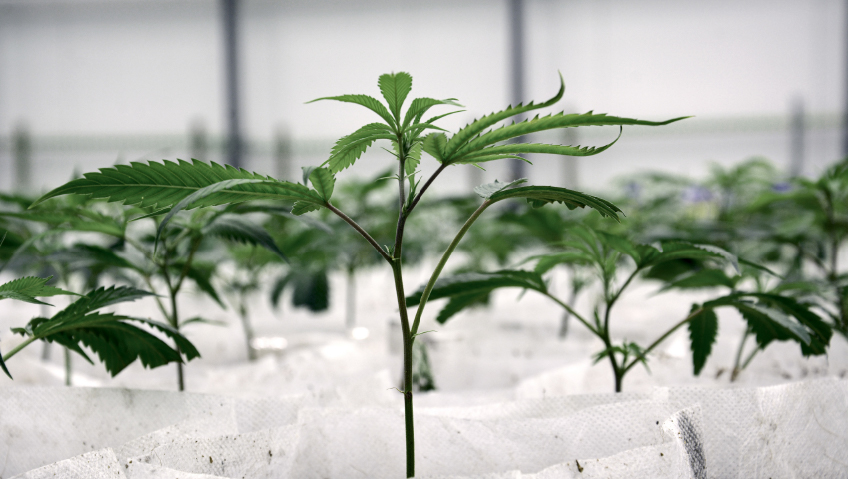You’ve sanitized your hands and got your mask on, but what’s going through your mind as you roll your grocery cart along the produce displays and the refrigerated meat selections?
Are you thinking, where did that food come from and who has handled it along the way? Is it safe? Does it actually contain the nutrition we need?
The effort to browse and buy your meals and snacks for the week is a sobering task – even if you grab a Kit Kat bar at the checkout for a treat.
The pandemic has prompted a massive consumer rethink around food. People are scared and are no longer just looking at food labels for sugar and sodium amounts; they are concerned about food production, handling and storage.
“The risks, no matter where you buy your food, are low, because food and food packaging no matter where it is from is unlikely to result in you being infected with the virus that causes COVID-19,” says Betsy Bihn, Director of the Produce Safety Alliance and Executive Director at the Institute for Food Safety at Cornell University. “The most likely way you would get infected is by person-to-person contact. The virus is transmitted by respiratory droplets.”
But what if a sick person coughs right on the food or the food packaging? “The virus is unstable outside of the body and rapidly inactivated on surfaces,” Bihn says.
That’s the top line from Cornell’s COVID-19 FAQ series on YouTube.
But no matter what the experts say, there’s no question that this pandemic is changing the way people eat, and shaping innovation and safety in the food industry.
People are monitoring how their food gets to them and, at the same time, thinking more about the food choices they make to boost their immunity and reduce their risk. Consumers want food with minimal human touch points, according to Yelp’s Coronavirus Impact Report. A recent survey by Technomic found that 32 percent of adults plan to eat at restaurants less often because of contagion concerns.
And with this heightened public fear over dining out and food safety, home cooking is making a comeback.
The Food Network ratings jumped 25 percent shortly after the stay-at-home orders came into place last spring, likely because people wanted to up their culinary know-how. And there’s been an uptick in demand for cooking and baking staples (flour is still a treasured commodity) and meal kits, including the home-delivered ones you assemble and serve yourself. There has also been more focus on food quality, local production, and vegan, vegetarian and organic choices as a result of the pandemic.
Certainly, people have spent a lot of time over the past year thinking about their health and trying to eat better to combat all the stress and uncertainty and fight off contagion. And we do know that the coronavirus is a more serious threat to people with pre-existing health conditions like heart disease, diabetes and obesity. The fact that diet plays a huge role in the management of these conditions is well documented by scientific study.
“COVID-19 reminded people that they are in charge of their own health care and food choices. Organic remains a silver lining and growth segment in the food industry, proving that good food is pandemic-proof,” Forbes says.
Another rising trend is the pursuit of immunity-boosting ingredients added to foods to increase value and attract consumers. Elderberries, probiotics, turmeric and moringa, the “miracle tree” with antiviral properties that is native to India, are among those poised for growth. “A lot of companies will be jumping on this immunity bandwagon,” Kara Nielsen, Director of Food & Drink at trend forecaster WGSN, told FoodDive.com.
Food brands are adding benefits and claims to their products that prioritize health, like yogurt companies that highlight probiotics and sugar reduction, Nielsen says.
Chobani has developed a line of yogurt with increased amounts of probiotics, for example, and Uncle Matt’s has launched an Ultimate Immune Orange Juice Beverage billed as “an immune support powerhouse made with organic orange juice, elderberry, 300 percent of your daily dose of vitamin C, 50 percent vitamin D and 25 percent zinc for immune and wellness support.”
Food and worker safety has also come to the forefront this past year, so there’s a critical demand for transparency in food security.
Innova Market Insights, a food trends specialist firm for more than 25 years, says that transparency throughout the supply chain will dominate as the top trend of 2021, with six in 10 consumers interested in knowing more about their food’s origin.
New packaging technologies are coming to market to inform and protect shoppers, like invisible barcodes and digital expiration date labels that offer real-time monitoring of food.
As well as smart packaging, food producers are turning to blockchain to track products from farm to table. For example, the new Thank My Farmer app allows consumers to trace their coffee beans with an interactive map. Blockchain can also help if there is a product recall.
The IBM Food Trust has hundreds of companies on its blockchain-enabled platform, from growers and food manufacturers like Dole to retailers like Walmart, to trace foods and manage the supply chain. There’s also a push to incorporate more automation and robotics to elevate food safety in meat packing and processing plants. Engineers at the Tyson Manufacturing Automation Center are working to develop technology like robotic cameras to detect product defects.
New developments in technology are also helping to give people confidence in their food. Tech, like CRISPR that allows geneticists to edit DNA sequences and modify gene function, is being used in crops to improve nutrition, yield and drought tolerance, and in food innovation to engineer probiotic cultures for those super-healthy yogurts.
But as much as people recognize all the changes of the new normal, we are creatures of habit.
While the pandemic has hit the restaurant industry hard, fast food chains have the advantage of efficient drive-thrus and mobile apps that have made buying meals convenient and safe. Chains like Taco Bell have seen success. McDonald’s same-store sales increased by 4.6 percent in the third quarter of 2020, CNBC reported.
On that note, digital innovation is everywhere, Technomic reports: “From facial recognition ordering systems and app-enabled beverage machines to Wi-Fi available in the parking lot, technology is presenting restaurant chains with unique solutions and fresh points of differentiation.”
Leading chains are developing drive-thrus that make use of artificial intelligence, with digital voice assistants for ordering and payment, and license plate recognition software. And get ready for fast food for your health, with menu items that cleanse the body, such as leafy greens and immune-boosting salads and smoothies, and those that are considered better for the environment, like non-dairy milks and plant-based proteins.
“The kitchen’s a laboratory, and everything that happens there has to do with science,” Food Network celebrity chef Alton Brown says about food preparation and cooking. “It’s biology, chemistry, physics.”






